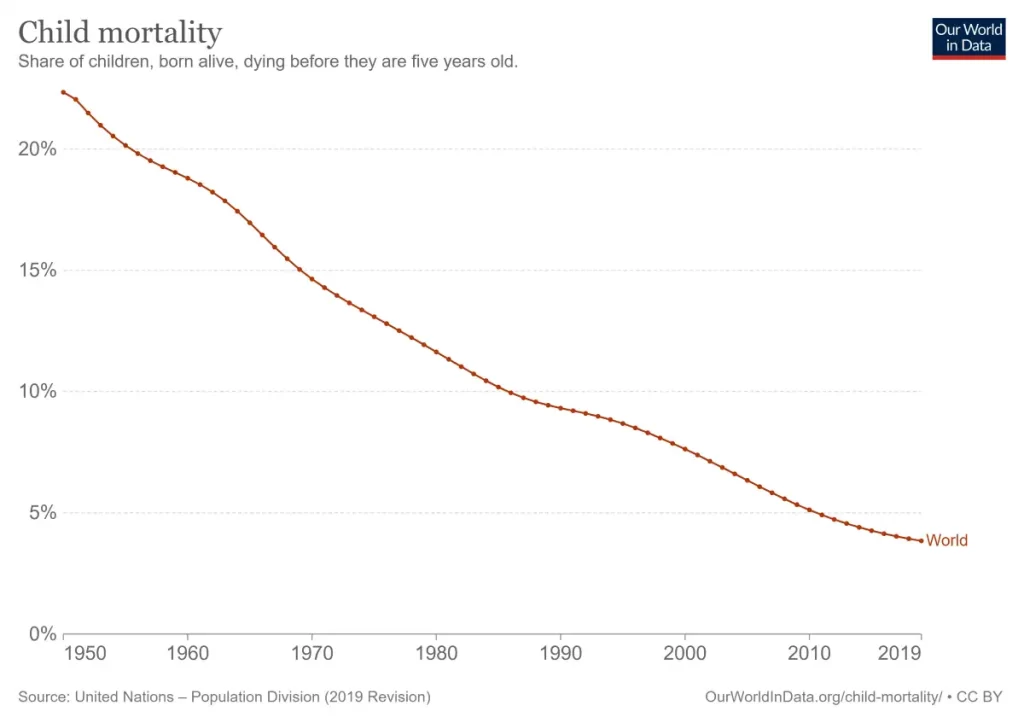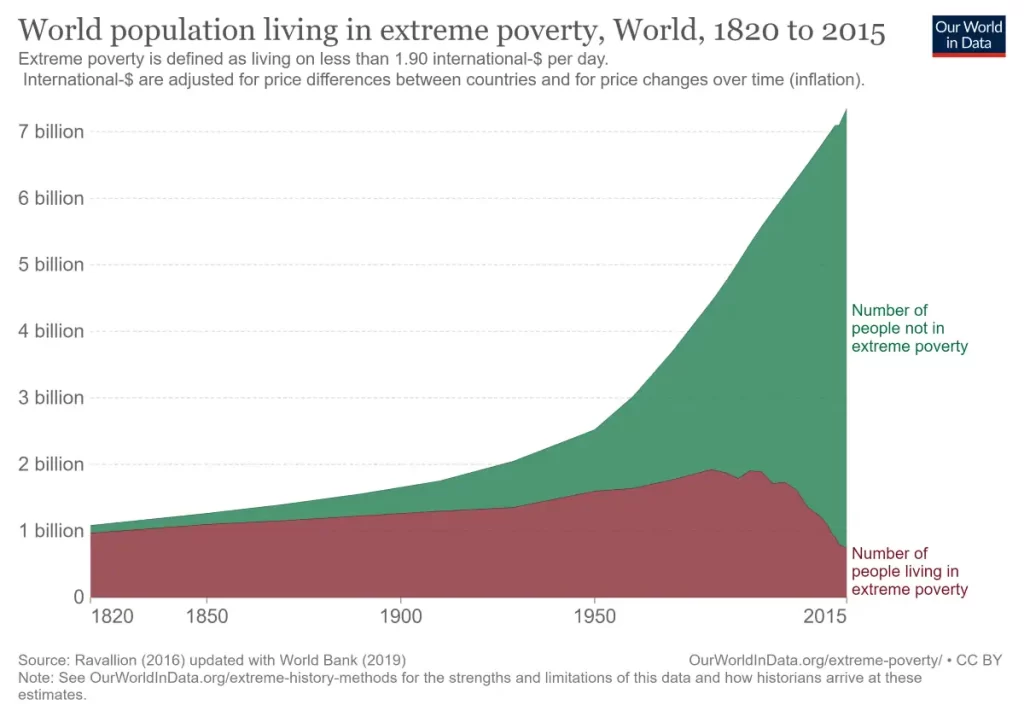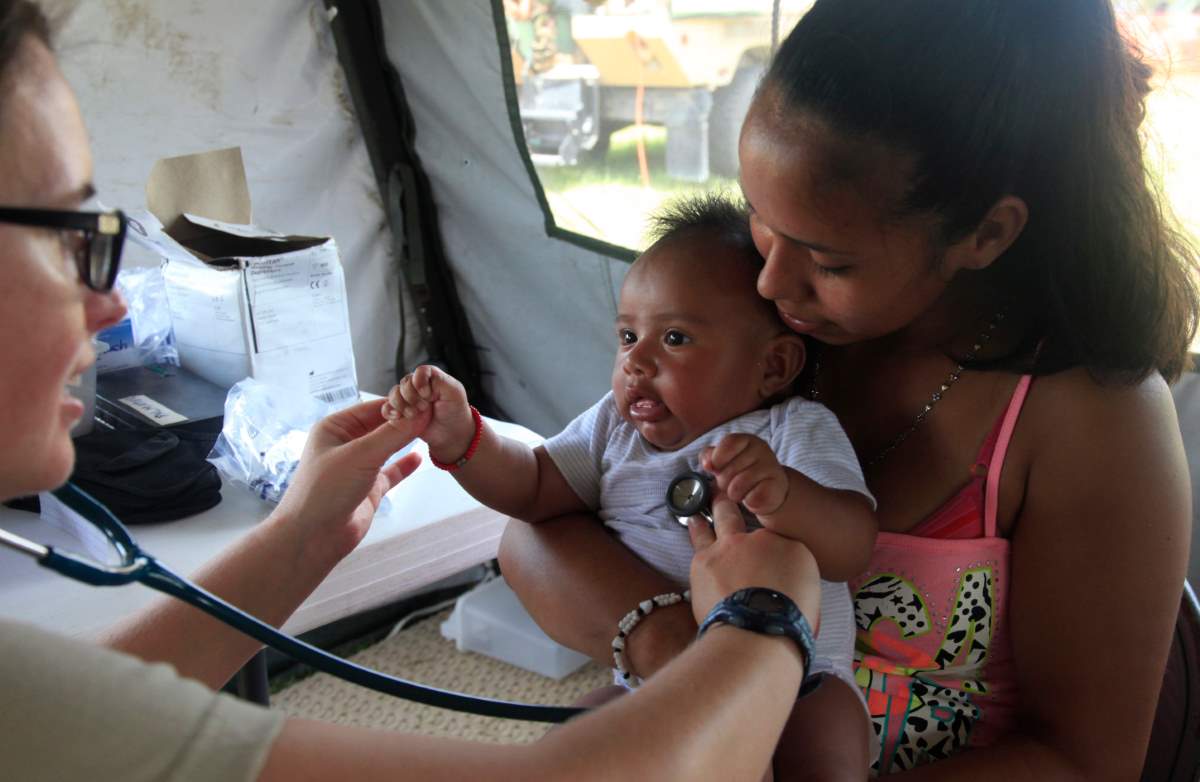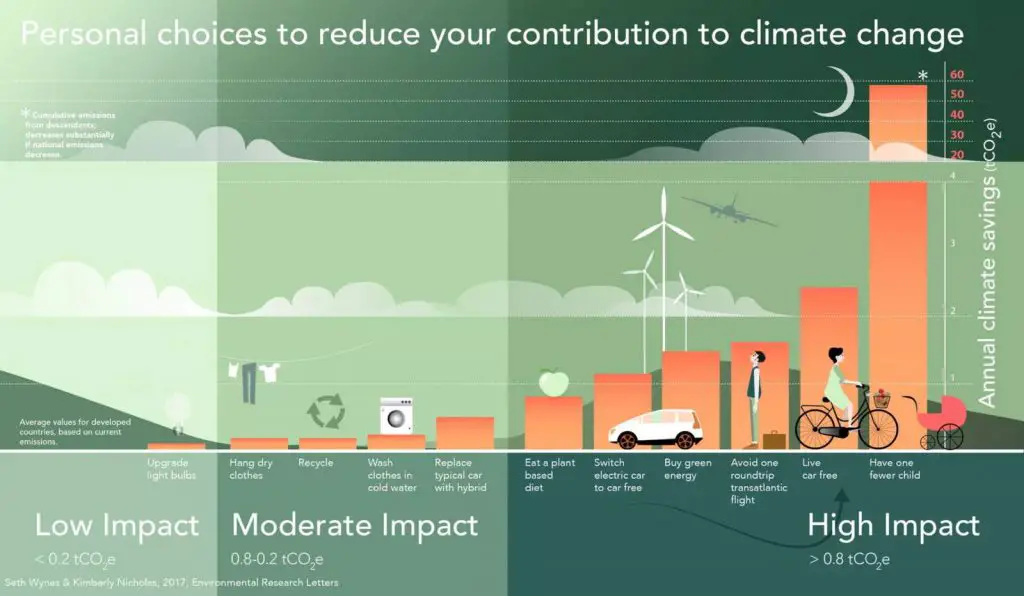The future may seem dystopian since there are many problems in the world: global warming, environmental problems, biodiversity loss, pandemics, etc… But we can still be hopeful for the future thanks to these three key statistics.
Statistic 1: Since 1950, child mortality have plummeted from more than 20% to less than 5%
Before the Modern Revolution (see notes 1), child mortality was very high in all societies that we have knowledge of. At least 25% of all children died in the first year of life, and almost half died before reaching the end of puberty.
Over the last two centuries all countries in the world have made very rapid progress against child mortality. From 1800 to 1950 global mortality has halved from around 43% to 22.5%. Since 1950 the mortality rate has declined five-fold to 4.5% in 2015. All countries in the world have benefitted from this progress
Since 1950, child mortality (born alive, dying before they are five years old) has plummeted from more than 20% to less than 5%. This is a huge accomplishment that should not be overlooked.
Even since 1990, child mortality has more than halved – from 12.5 million in 1990 to 5.2 million in 2019, in less than just three decades!

Furthermore, this is not just limited to the developed countries. For example, in Africa, child mortality was 32.27% in 1950 and as of 2019, it was 6.80%. Still worse than the world average, and still tragically high, but the improvement is undeniable.
But we must also keep in mind that child deaths are still extremely common: 11 children are dying every minute. We must still do something about this.
Why it is important?
A child’s death is a very tragic event.
Thanks to advances in farming, medicine, and sanitation, a newborn today can expect to live more than 70 years. Contrary to popular belief, saving more lives does not lead to overpopulation. As health improves and as fewer children die, families choose to have not as many children.
An increase in women’s employment worldwide is also contributing to this.
It seems faster we improve health, the faster family sizes goes down.
Statistic 2: Since 1960, the fertility rate has fallen by half
For much of our history, the average woman had at least 5 children, and often more.
In 1960, on average, a woman was giving birth to 5.05 babies. As a result, during the 1960s, the human population increased by 2 percent every year.
As of 2015, the number of children (on average) for per woman was 2.49. The fertility rate has fallen by half.

Why it is important?
It seems have only as many children as they want – and they want fewer children. It’s important because having fewer children greatly contributes our fight with global warming. In fact, having one fewer child (or no child at all) have the highest impact to reduce your carbon footprint.
Statistic 3: Number of people living in extreme poverty rapidly decreased
It is so amazing: between 1990 and 2015, an average of 137,000 people escaped extreme poverty every single day!

Why it is important?
Note that the graph above also shows the number of people NOT living in extreme poverty. This can help us better understand the data, because back then, the world’s population was much smaller, and, in the 1820s for example, the majority of people were living in extreme poverty.
In time, not only the number of people living in extreme poverty was decreased: the world’s population is also increased greatly, and the ratio of people living in extreme poverty decreased even more, and now, the majority of people are not living in extreme poverty.
It matters because poorer countries do not have the resources to take all the actions they need to take, like good health systems, good education systems, clean energy, big infrastructure. These things cost a huge amount of money. The wealthier the people are (and the wealthier a country is), they can spend more money on education, health, and even more important, clean energy.
Notes
- According to historian David Christian, The Modern Revolution is the most recent threshold of increasing complexity. It have accelerated collective learning, improvements in science, generated new technologies, and improved means of communication, transportation, and food production. These have had a dramatic impact on human life. Some results of the Modern Revolution are:
- Human lifespan increased
- Population has grown drammatically
- The urbanization of the world
- Number of illiterate people has increased
- Vaccines and cures have been developed for some of the most life-threatening diseases
- Wars and killings by governments have been decreased
Sources
- “Memorizing these three statistics will help you understand the world” on Bill Gates blog
- “The Modern Revolution” on turnitin.com
- Child and Infant Mortality on Our World in Data website
- The global decline of the fertility rate since 1950 on Our World in Data website
- Global Extreme Poverty on Our World in Data website
- Space Shuttle Endeavour’s Touchdown Meets Columbia’s Salute [An amazing photo from the past] - February 29, 2024
- Moon Landings: All-Time List [1966-2024] - February 23, 2024
- From Orbit to Ordinary: 10 Earthly Applications of Space Technology - January 23, 2024




